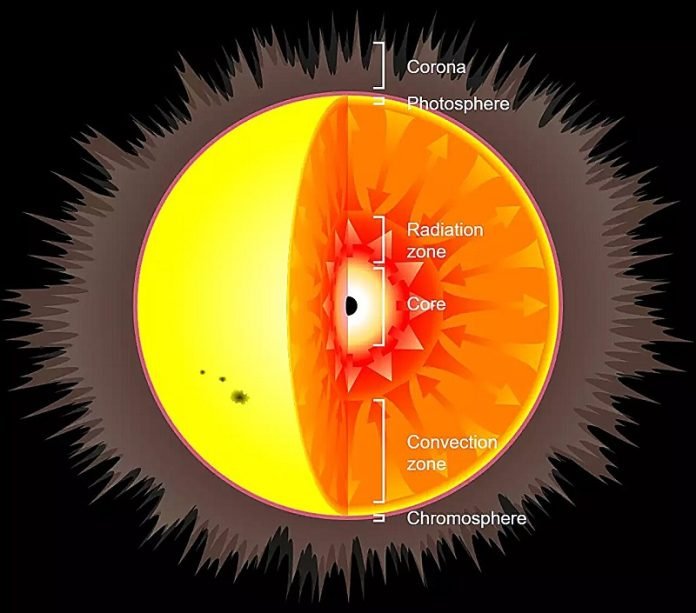
In a striking blend of astronomy and theoretical physics, scientists have explored a mind-bending scenario: what if black holes existed inside stars?
This concept, stemming from a study led by researchers at the Max Planck Institute for Astrophysics and published in The Astrophysical Journal, revolves around the idea of ‘Hawking stars’ – stars that may have small black holes at their centers.
This intriguing idea could reshape our understanding of both stars and black holes.
Let’s dive into this scientific exploration. Imagine, just after the Big Bang, tiny black holes, known as primordial black holes, were formed.
These black holes could vary in size, from being as small as an asteroid to as large as thousands of times the mass of the sun.
Interestingly, these primordial black holes might be a key part of the mysterious dark matter and could be the seeds of the massive black holes found at the centers of galaxies today.
In a rare event, as a star forms, it could capture one of these tiny black holes.
This leads to the formation of a Hawking star, named after the famous physicist Stephen Hawking, who first proposed this concept in the 1970s.
So, what happens inside a Hawking star? At its core sits a growing black hole. However, this black hole grows very slowly.
The reason for this slow growth is the star’s own luminosity, which pushes against the gas that the black hole would otherwise swallow up.
A team of international scientists modeled what would happen to a star with a black hole at its center. They used different scenarios, considering various sizes of the initial black hole and how it would interact with the star’s center.
Their findings were surprising: if the black hole is small enough, the star would appear almost normal.
Even our sun could potentially host a black hole as massive as the planet Mercury at its center without any noticeable differences from the outside.
The key changes would happen near the star’s core, which would become convective due to the black hole’s presence. This means that the core would mix more, affecting how the star burns and evolves, but these changes would be hidden deep inside the star.
Could we detect these Hawking stars? That’s where asteroseismology comes in. This new field studies the internal structure of stars by analyzing their acoustic oscillations.
These subtle vibrations might reveal the presence of a black hole inside a star.
In the future, especially when stars evolve into red giants, the black hole could cause unique signatures. With upcoming space missions like PLATO, astronomers hope to spot these unique stars.
If primordial black holes really were formed in the early universe, Hawking stars could be our window to discovering them. Scientists even suggest that these stars might be more common in places like globular clusters and ultra-faint dwarf galaxies.
The study of Hawking stars is not just an exercise in theoretical astronomy; it’s a gateway to understanding the mysteries of black holes, dark matter, and the universe’s early moments. It’s a fascinating reminder of how much we still have to learn about the cosmos.



